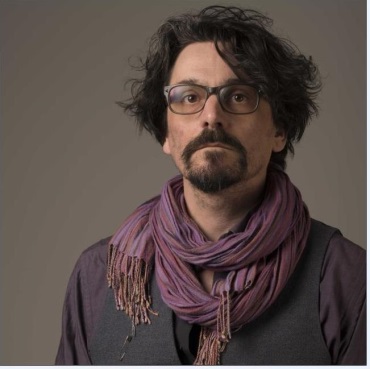 |
In my practice orientated PhD, which centred on painting, the cinematic and a re-negotiation of formalist modes of painting practice through an exploration of Gilles Deleuze’s philosophical processes. Specifically, how their philosophical relationship to the virtual could inform each other towards a concept of the painted picture plane that acknowledged both surface and pictorial depth. A central premise of the research both theoretically and practically, as a studio investigation, explored the potential of the internal pictorial plane becoming a virtual, complex and a plural space with a duration more akin to celluloid and the cinematic. Giles Deleuze’s concept of ‘‘the fold’ and ‘duration’ were at the core of the research and provided a method to re-think the established Renaissance, Modernist and Post-Modernist pictorial planes. The research discussed my own studio practice as it explored these concepts.
|
|---|---|
|
My continued research is has taken the relationship between the photographic darkroom as a point of the abstracted event for painting. It is at this point of nexus that the distinct relationship between painting, photography and ‘the virtual’ can be presented. In effect how, an understanding of the virtual can be employed as a mode of post-digital semblance (representation). The role of the virtual becomes a key concept in understanding how as a mode of visual semblance as a constructed illusion becomes pictorially abstract through the advent of the post-digital. Overview: Proposed research
The proposed research question would initially explore this relationship through a close reading of Carla Klein’s painting practice and her particular relationship to developing through the darkroom her photography as a mode of abstraction for her paintings. It is at this point of nexus that the distinct relationship between painting, photography and ‘the virtual’ will be explored through the proposed research – In effect how an understanding of the virtual can be employed as a mode of post-digital semblance (representation). The role of the virtual becomes a key concept in understanding how as a mode of visual semblance as a constructed illusion becomes pictorially abstract through the advent of the post-digital.
It is the discrete connections between painting, photography which historically presented itself through difference that forms the central method for the methodology: that the camera has a particular objective truth and painting is sufficiently removed from it subject as to take on new subjectivity. However, it is this exact difference, when explored outside of an established historicity of negation, that now opens a potential, which can now be discussed through a mode of post-digital semblance. Within the proposed methodology the philosophical concept of ‘difference and repetition’, as discussed by Deleuze2 (1968), shall be explored as a formulation of a constructed illusion that exists within the pictorial plane as virtual. This interrogation of the virtual, which has now been transmuted through the advent of ‘the digital’ has the potential to illicit an understanding that a changed and activated viewer can conceptually engage with painting. It is this distinct notion that has formed a new potential for the pictorial plane, one that can be re-coded through the post-digital.
In addition, the methods will initiate a dialogue that acknowledges notions of duration and time, as discussed in Memory and Matter by Henri Bergson3 (1896). It is through the development of the concept: the ‘recollection-image’ by Bergson and advanced on by Deleuze4 (1985), that the nexus of the emerging method of the virtual is formed. A concept which when explored establishes the virtual as a space that expands and challenges static notions of painting and photography as fragments of semblance.
1: Deleuze, G. (2006) The Fold - Leibniz and the Baroque. London: The Athlone Press. 2: Deleuze, G. (2004) Difference and Repetition London: Continuum Books.
|
|


/prod01/wlvacuk/media/departments/digital-content-and-communications/images-18-19/iStock-163641275.jpg)
/prod01/wlvacuk/media/departments/digital-content-and-communications/images-2024/250630-SciFest-1-group-photo-resized-800x450.png)
/prod01/wlvacuk/media/departments/digital-content-and-communications/images-18-19/210818-Iza-and-Mattia-Resized.jpg)
/prod01/wlvacuk/media/departments/digital-content-and-communications/images/Maria-Serria-(teaser-image).jpg)
/prod01/wlvacuk/media/departments/digital-content-and-communications/images-2024/241014-Cyber4ME-Project-Resized.jpg)
/prod01/wlvacuk/media/departments/digital-content-and-communications/images-18-19/210705-bric_LAND_ATTIC_v2_resized.jpg)